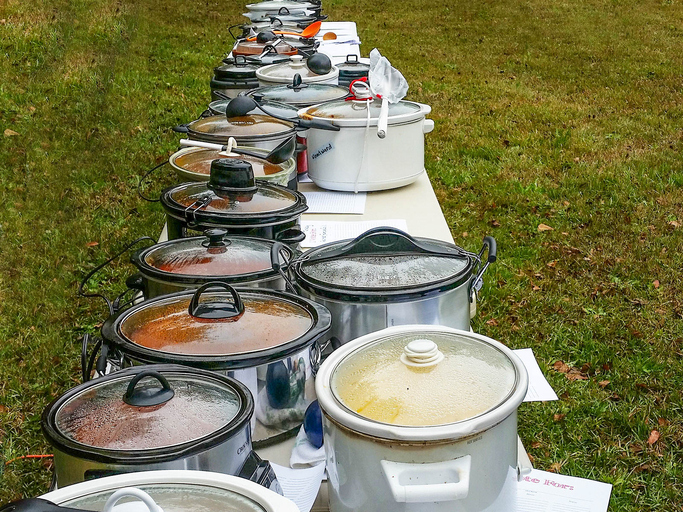
Thanksgiving is supposed to be a time where families, friends and even churches open their doors so that people can come eat, break bread and enjoy each other’s company. But one Thanksgiving gathering at a church turned deadly.
It is the 10th anniversary that three people died and five others were sickened after eating a Thanksgiving meal prepared at Antioch’s American Legion Hall by a local church, according to a California Contra Costa County Health Services spokeswoman, CBS San Francisco reported.
What Really Happened and Which Foods Made People Sick?
This serves as a sobering example of what not to do with your food at Thanksgiving each year.
All eight people were admitted to Sutter Delta Medical Center at various times on the Friday and Saturday after that Thanksgiving Thursday.
Out of the 835 people who at the meal, three people died, four were treated and released and one person remained hospitalized for over a month, according to the hospital.
Autrey James, commander at American Legion Post 161, said Golden Hills Community Church was responsible for preparing the meals on Thanksgiving.
“We are extremely, extremely upset that anyone lost their lives,” James said. “We were not ourselves involved in the cooking of the meal.”
The cause of the deaths and illnesses is still under investigation, said Health Services spokeswoman Victoria Balladares.
Veteran Esidor Alviar was among hundreds of people at the dinner Thursday and said he too experienced some symptoms later in the evening.
“It was a nice dinner, turkey, stuffing, cranberries and coffee,” Alviar said. “About one o’clock in the morning, I had cramps and a terrible stomachache. I had to run to the bathroom really bad. I was sick. I thought about going to the hospital, but I hate hospitals.”
At a news conference in Martinez Monday evening, Contra Costa Health Services officials said all the victims were elderly and belonged to the same unidentified care facility. But others from the same facility who ate at the Thanksgiving meal did not get sick.
“If it were a food-borne outbreak, we’d expect to see a lot more people getting sick,” Balladares said.
Could it be that these people who were sick and died had a weaker tolerance to the illness that struck them? Or did these people eat the same food before they came to the Thanksgiving dinner? Investigators are still putting pieces of the puzzle together.
Food-borne illnesses cause nearly 48 million illnesses and around 3,000 deaths each year.
Bacteria multiply rapidly between 40 °F and 140 °F. To keep food out of this “Danger Zone.” It’s important to always keep cold food cold and hot food hot.

When Transporting Food, Do This:
Before you take food to someone’s house or event, be sure you (and whoever is bringing food) follow these guidelines:
- Use separate containers: Keep raw and ready-to-eat foods in separate, sealed containers.
- Double-bag liquids: Use leak-proof plastic bags and wrap them tightly.
- Load strategically: When packing a cooler or car, put raw meats and poultry on the bottom to prevent dripping onto other foods.
- Use insulated bags: Insulated delivery bags can keep hot food warm, while insulated pan carriers can transport full food pans.
- Use sturdy packaging: Use packaging that’s appropriate for the food you’re transporting and that will protect it from damage. For example, don’t use a cardboard box to transport meat.
- Transport food quickly: The longer food is in transit, the more likely it is to spoil.
Quick tips to Always Remember when Going Over Someone’s House for Thanksgiving:
– Be sure they store food in the refrigerator (40 °F or below) or freezer (0 °F or below).
– Cook food to a safe minimum internal temperature.
– Cook all raw beef, pork, lamb and veal steaks, chops, and roasts to a minimum internal temperature of 145 °F as measured with a food thermometer before removing meat from the heat source. For safety and quality, allow meat to rest for at least three minutes before carving or consuming. For reasons of personal preference, consumers may choose to cook meat to higher temperatures.
– Cook all raw ground beef, pork, lamb, and veal to an internal temperature of 165 °F as measured with a food thermometer.
– Cook all poultry to a safe minimum internal temperature of 165 °F as measured with a food thermometer.
– Maintain hot cooked food at 140 °F or above.
– When reheating cooked food, reheat to 165 °F.
– For optimum safety, do not stuff your turkey. Place stuffing in a separate baking dish or pan to cook.
– USDA recommends an oven temperature no lower than 325°F for cooking a turkey along with using a food thermometer to make sure the thickest part of the turkey reads 165°F. A 20-24 pound turkey may take about 5 hours to cook.
– Avoid cross-contamination by using separate cutting boards, plates, and utensils when handling raw turkey. Wash items that have touched raw meat with warm soap and water, or place them in a dishwasher.
– Refrigerate leftovers within two hours to prevent bacteria from growing on the food. Eat leftovers in the refrigerator within 3-4 days. Use the freezer to store leftovers for longer periods.
– Do not overfill your refrigerator, as it causes it to work too hard and may not keep it at 40°F or below.

The county’s public health and environmental health officials were conducting an investigation to determine just what might have killed and sickened the diners, but Balladares said there is no current risk to the general public.








